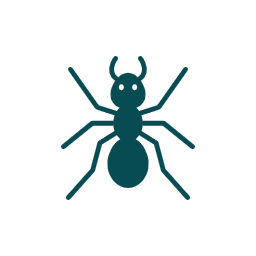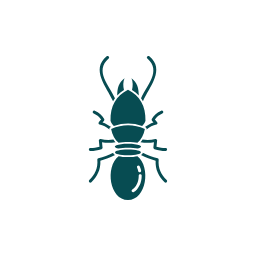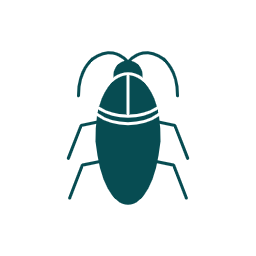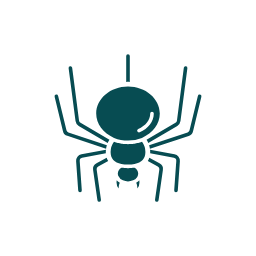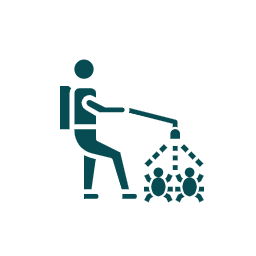Bed bugs, tiny but tenacious pests, can make a great night of sleep turn into a nightmare. If you wake up with itchy bites or see dark spots on your sheets, you could have a bed bug infestation. Bed bugs are nocturnal and incredibly skilled at hiding, so early identification is crucial in preventing a full-blown infestation. In this guide, we’ll show you how to check your mattress for bed bugs, where they hide and the best pest control solutions to keep them away for good.
Signs of Bed Bugs
Before you whip off your sheets and start vacuuming your box spring, you should know how to identify bed bugs. These little bugs are brownish red, roughly the size of an apple seed and feed on human blood as they sleep. Here are the signs of bed bugs to be on the lookout for:
- Itchy Bites: A bed bug bite can present as a cluster or line on exposed areas of the skin. If you’re waking up with red, itchy bites, that could be a sign of an infestation.
- Dark Stains on Decorations or Sheets: The faecal matter of bed bugs is dark brown to black and will look similar to small ink stains around the seams of your mattress and on your bedding.
- Red-Brown Insects: If you find bed bugs in your home and especially around a mattress & box spring, then you have a problem on your hands.
- Small White Eggs: Female obviously lay eggs within a crack or crevice which are small (so hard to find) and require a magnifying glass to see.
- Exoskeletons: As they grow, bed bugs shed their skins. Another red flag is any exoskeletons found along the bed frame and headboard.
If you still can’t identify the bedbugs in your home, then waste no time in giving us a call now.
Where to Find Bed Bugs
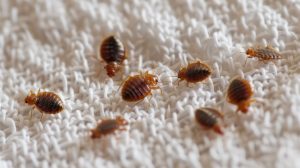
Bed bugs are small, they’re flat, and they can squeeze into the tiniest of spaces. If you think you may have an infestation, you need to examine your bed in detail, checking:
- Mattress seams and buttons: Bed bugs like to hide close to where you sleep.
- Bed Frame, Headboard: Gaps and crevices on wooden bed frames and in an upholstered headboard can support a bedbug colony.
- Box Springs and Baseboards: Bed bugs may also reside in box springs, baseboards or even a bed leg.
- Bedding and Close Furniture: They frequently infest bedding (pillows and sheets), and nearby furniture like nightstands, or even couches.
How to Inspect Your Mattress for Bed Bugs
For a complete bed bug inspection, do the following:
- Flashlight And Credit Card: A flashlight will help you find bed bugs in dark areas and a credit card can scrape along seams and cracks to remove any bugs that might be hiding.
- Check the Mattress and Box Spring: Inspect the seams, undersides, and crevices of the mattress and box spring of the bed for bed bugs.
- Examine Your Bed Frame And Headboard: Look for cracks where bed bugs can hide and nest in box springs or headboards.
- Check for Dark Spots or Blood Spots: The appearance of unexplained dark spots on your bedding can be a sign of bed bugs.
Better still, we can help you identify these bedbugs through our ultimate bedbug inspection. Contact us to get started.
How to Prevent Bed Bug Infestations
Avoiding a bed bug infestation is much simpler than fighting off an all-out infestation. Here’s how to keep the pests at bay:
- Ongoing Inspections: Regular checks of your mattress for bed bugs, especially if you’ve traveled or had visitors, can help you get rid of the bugs.
- Use a Mattress Encasement: A mattress and box spring protective which encases the entire mattress or bed can minimize the ability for a bed bug to infest them.
- Keep Your Bedroom Uncluttered: Bed bugs can nest in piles of clothes, books, and furniture, so keep your space tidied up.
- Seal Cracks and Crevices: Seal cracks in walls, furniture and baseboards to remove possible hiding areas.
- Second-Hand Furniture Won’t Do: If you let used furniture into your home, inspect it first for bed bugs.
How to Get Rid of Bed Bugs for Good
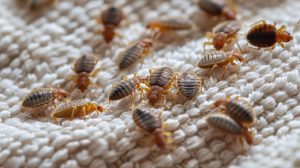
If you found bed bugs in your home, it’s very important to act right away. While techniques like vacuuming and heat treatment can be effective for do-it-yourselfers, the truth is, hiring a professional pest control service to eliminate bed bugs is the best way to get rid of them. Pest2Kill provides safe and effective treatments for any manner of Bed bug infestations.
Here’s what our professional bed bug treatment entails:
- Heat Treatment: Bed bugs do not tolerate extremely high temperatures, and heat treatment is one of the best removal methods.
- Insecticide Treatment: An insecticide treatment can kill bedbugs in their hiding places.
- Steam Clean: Steaming your bed and furniture can eliminate the bed bugs and their eggs.
Protect Your Home with Pest2Kill
At first it may seem like an infestation is too much to handle, but early detection and hiring a professional to get rid of the pests will help you keep the upper hand. At Pest2Kill we are bed bug inspection and treatment professionals, who will help you eliminate these pests from within your home once and for all. Call us today to kill the bed bugs before they get out of control!
FAQS
How does pest control help eliminate bed bugs?
Professional pest control services use targeted treatments, such as insecticide application and heat treatment, to kill bed bugs at all life stages. Since bed bugs can survive for months without feeding, professional intervention ensures complete eradication.
Can pests like bed bugs hide in other places besides mattresses?
Yes, bed bugs also hide in cracks, furniture, curtains, and even behind baseboards. They are excellent at staying out of sight, making thorough inspections necessary.
How can a flashlight help with a bed bug inspection?
Using a flashlight makes bed bugs easier to spot in dark crevices of your mattress and bed frame. Shine the light along seams, cracks, and folds where bed bugs can hide.
What should I do if I find bed bugs during a bed bug inspection?
If you detect live bed bugs, vacuum the affected areas immediately to trap bed bugs. Then, contact a pest control professional to stop bed bugs from spreading further.
What are some key things to look for when looking for signs of bed bugs?
Check for reddish-brown insects, dark spots on bedding, and tiny white eggs in the crevices of your mattress. Bed bug bites in people’s sleep areas can also be a warning sign.
Can a vacuum cleaner help remove bed bugs?
Yes, using a vacuum cleaner can remove bed bugs from mattresses, furniture, and carpets. However, this method alone won’t kill the bed bugs entirely; professional treatment is still necessary.
How do I prevent bed bugs from entering your home?
To prevent bed bugs from entering your home, inspect second-hand furniture before bringing it inside, use mattress encasements, and regularly inspect your home for signs of infestation early.


